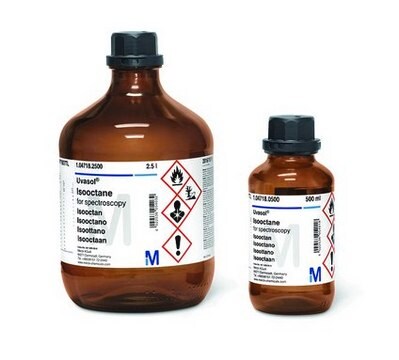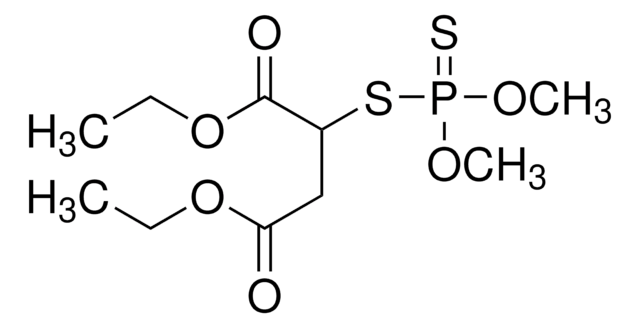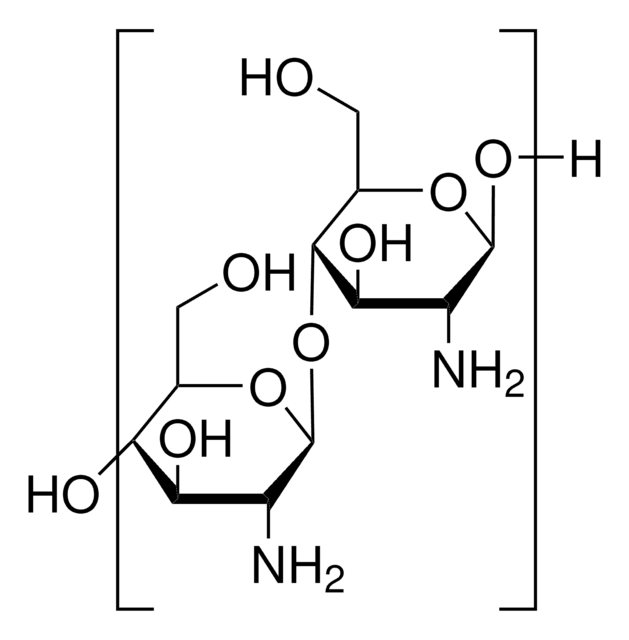721476
Kohlenstoffdisulfid -Lösung
5 M in THF
Anmeldenzur Ansicht organisationsspezifischer und vertraglich vereinbarter Preise
Alle Fotos(1)
About This Item
Empirische Formel (Hill-System):
CS2
CAS-Nummer:
Molekulargewicht:
76.14
MDL-Nummer:
UNSPSC-Code:
12352100
PubChem Substanz-ID:
NACRES:
NA.22
Empfohlene Produkte
Form
liquid
Konzentration
5 M in THF
Dichte
0.994 g/mL at 25 °C
SMILES String
S=C=S
InChI
1S/CS2/c2-1-3
InChIKey
QGJOPFRUJISHPQ-UHFFFAOYSA-N
Suchen Sie nach ähnlichen Produkten? Aufrufen Leitfaden zum Produktvergleich
Ähnliches Produkt
Produkt-Nr.
Beschreibung
Preisangaben
Signalwort
Danger
Gefahreneinstufungen
Carc. 2 - Eye Irrit. 2 - Flam. Liq. 2 - Repr. 2 - Skin Irrit. 2 - STOT RE 1 - STOT SE 3
Zielorgane
Peripheral nervous system,Central nervous system,Cardio-vascular system,Eyes, Respiratory system
Zusätzliche Gefahrenhinweise
Lagerklassenschlüssel
3 - Flammable liquids
WGK
WGK 2
Flammpunkt (°F)
-22.0 °F
Flammpunkt (°C)
-30 °C
Hier finden Sie alle aktuellen Versionen:
Besitzen Sie dieses Produkt bereits?
In der Dokumentenbibliothek finden Sie die Dokumentation zu den Produkten, die Sie kürzlich erworben haben.
Kunden haben sich ebenfalls angesehen
M Schuster et al.
Fungal genetics and biology : FG & B, 79, 132-140 (2015-06-21)
The use of fluorescent proteins (FPs) in plant pathogenic fungi provides valuable insight into their intracellular dynamics, cell organization and invasion mechanisms. Compared with green-fluorescent proteins, their red-fluorescent "cousins" show generally lower fluorescent signal intensity and increased photo-bleaching. However, the
S Kilaru et al.
Fungal genetics and biology : FG & B, 79, 125-131 (2015-06-21)
Fluorescent proteins (FPs) are powerful tools to investigate intracellular dynamics and protein localization. Cytoplasmic expression of FPs in fungal pathogens allows greater insight into invasion strategies and the host-pathogen interaction. Detection of their fluorescent signal depends on the right combination
Mark B van Eldijk et al.
Chemical communications (Cambridge, England), 49(71), 7770-7772 (2013-06-19)
CS2 hydrolase, a zinc-dependent enzyme that converts carbon disulfide to carbon dioxide and hydrogen sulfide, exists as a mixture of octameric ring and hexadecameric catenane forms in solution. A combination of size exclusion chromatography, multi-angle laser light scattering, and mass
Huan Liu et al.
Journal of hazardous materials, 235-236, 298-306 (2012-08-21)
Chemical conditioners are often used to enhance sewage sludge dewaterability through altering sludge properties and flocs structure, both affect odorous compounds emissions not only during sludge conditioning but also in subsequent sludge disposal. This study was to investigate emission characteristics
Continuous direct spinning of fibers of single-walled carbon nanotubes with metallic chirality.
Rajyashree M Sundaram et al.
Advanced materials (Deerfield Beach, Fla.), 23(43), 5064-5068 (2011-10-11)
Unser Team von Wissenschaftlern verfügt über Erfahrung in allen Forschungsbereichen einschließlich Life Science, Materialwissenschaften, chemischer Synthese, Chromatographie, Analytik und vielen mehr..
Setzen Sie sich mit dem technischen Dienst in Verbindung.










